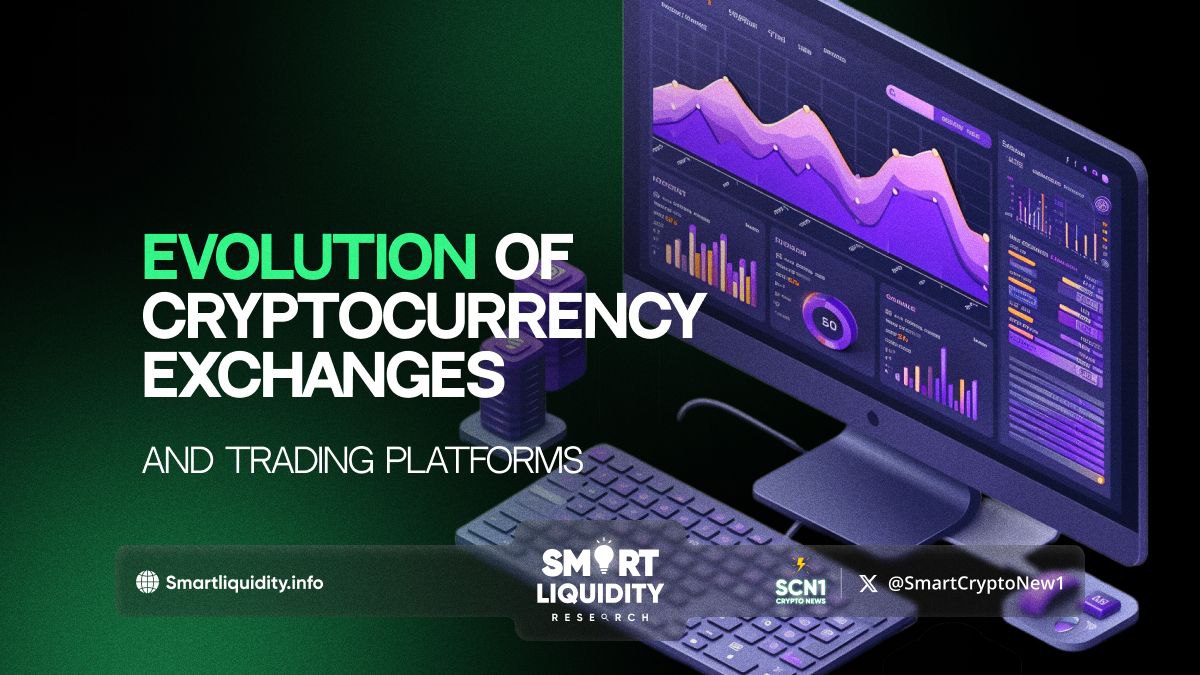Evolution of Cryptocurrency Exchanges and Trading Platforms


Evolution of Cryptocurrency Exchanges and Trading Platforms! The world of finance has witnessed a revolutionary transformation with the advent of cryptocurrency. At the heart of this digital financial ecosystem are cryptocurrency exchanges and trading platforms, which have evolved significantly since the inception of Bitcoin in 2009.
This article explores the evolution of these platforms, highlighting key milestones and innovations that have shaped the current landscape.
The Early Days: Emergence of Bitcoin and Initial Exchanges
The creation of Bitcoin by the pseudonymous Satoshi Nakamoto in 2009 marked the birth of cryptocurrency. Early adopters mined and traded Bitcoin peer-to-peer, but as interest grew, the need for a more structured trading environment became apparent. The first cryptocurrency exchanges began to appear, providing a centralized platform for buying, selling, and trading Bitcoin.
One of the earliest and most notable exchanges was Mt. Gox, founded in 2010. Initially a platform for trading Magic: The Gathering cards, it quickly pivoted to become the largest Bitcoin exchange by 2013, handling over 70% of all Bitcoin transactions worldwide. However, the exchange was plagued by security issues, culminating in its infamous collapse in 2014 after a massive hack resulting in the loss of approximately 850,000 Bitcoins.
The Rise of Altcoins and Diverse Trading Platforms
The introduction of altcoins, starting with Litecoin in 2011, expanded the cryptocurrency landscape and increased the demand for exchanges supporting multiple cryptocurrencies. This period saw the rise of several new exchanges, such as Bitstamp, Kraken, and Bittrex, which provided more robust security measures and a wider range of trading pairs.
As the market matured, the distinction between centralized exchanges (CEX) and decentralized exchanges (DEX) became more pronounced. Centralized exchanges, like Coinbase and Binance, offered user-friendly interfaces, high liquidity, and customer support, making them popular among mainstream users. However, they also faced criticism for their centralized control and vulnerability to hacks.
In contrast, decentralized exchanges emerged as a response to these criticisms. Platforms like EtherDelta and later Uniswap and SushiSwap allowed users to trade directly from their wallets without the need for an intermediary, enhancing security and maintaining the decentralized ethos of blockchain technology. However, DEXs initially struggled with issues such as lower liquidity and complex user interfaces.
Technological Innovations and Advanced Trading Features
The evolution of cryptocurrency exchanges has been marked by continuous technological innovation. One significant development was the integration of advanced trading features, including margin trading, futures, and options, which attracted professional traders and institutional investors.
Binance, launched in 2017, quickly rose to prominence by offering a wide range of cryptocurrencies, low trading fees, and innovative products like Binance Futures and Binance Launchpad. Its rapid growth exemplified the increasing demand for diverse trading options and advanced tools.
Another noteworthy innovation was the introduction of automated market makers (AMMs) on decentralized exchanges. Uniswap, launched in 2018, pioneered the AMM model, allowing users to trade directly with liquidity pools rather than relying on order books. This model significantly improved liquidity and reduced slippage, making decentralized trading more accessible and efficient.
Regulatory Challenges and the Path to Mainstream Adoption
As cryptocurrency trading gained popularity, it attracted the attention of regulators worldwide. Governments and financial authorities grappled with developing appropriate frameworks to regulate these platforms, balancing the need for consumer protection with fostering innovation.
In response, many exchanges implemented robust compliance measures, including Know Your Customer (KYC) and Anti-Money Laundering (AML) protocols. Coinbase’s successful initial public offering (IPO) in 2021 marked a significant milestone, signaling the growing acceptance and legitimacy of cryptocurrency exchanges within the traditional financial system.
The Future: Decentralization, Interoperability, and Beyond
Looking ahead, the evolution of cryptocurrency exchanges and trading platforms is poised to continue. The trend towards decentralization is likely to persist, with increasing emphasis on privacy, security, and user control. Projects like Polkadot and Cosmos aim to enhance interoperability between different blockchains, creating a more cohesive and interconnected ecosystem.
Moreover, the integration of artificial intelligence, machine learning, and decentralized finance (DeFi) protocols promises to further transform trading platforms, offering personalized trading strategies, improved risk management, and innovative financial products.
In Summary
The evolution of cryptocurrency exchanges and trading platforms reflects the dynamic and rapidly changing nature of the cryptocurrency industry. From the early days of Bitcoin and Mt. Gox to the rise of decentralized exchanges and advanced trading features, these platforms have continually adapted to meet the needs of an expanding and diverse user base. As technology and regulatory landscapes evolve, the future of cryptocurrency trading promises to be even more exciting and transformative.
REQUEST AN ARTICLE
DISCLAIMER
“The information provided on this platform is for general informational purposes only. All information on the platform is provided in good faith; however, we make no representation or warranty of any kind, express or implied, regarding the accuracy, adequacy, validity, reliability, availability, or completeness of any information on the platform.”




